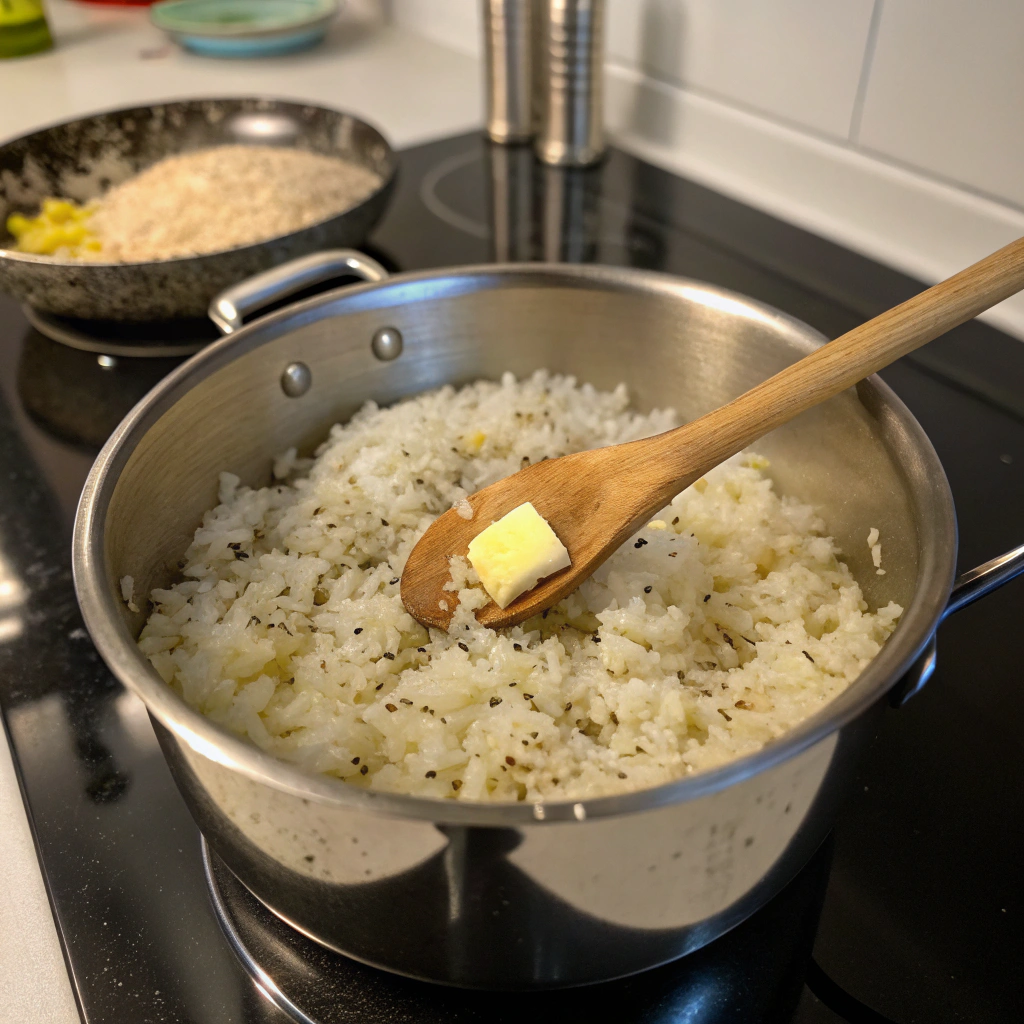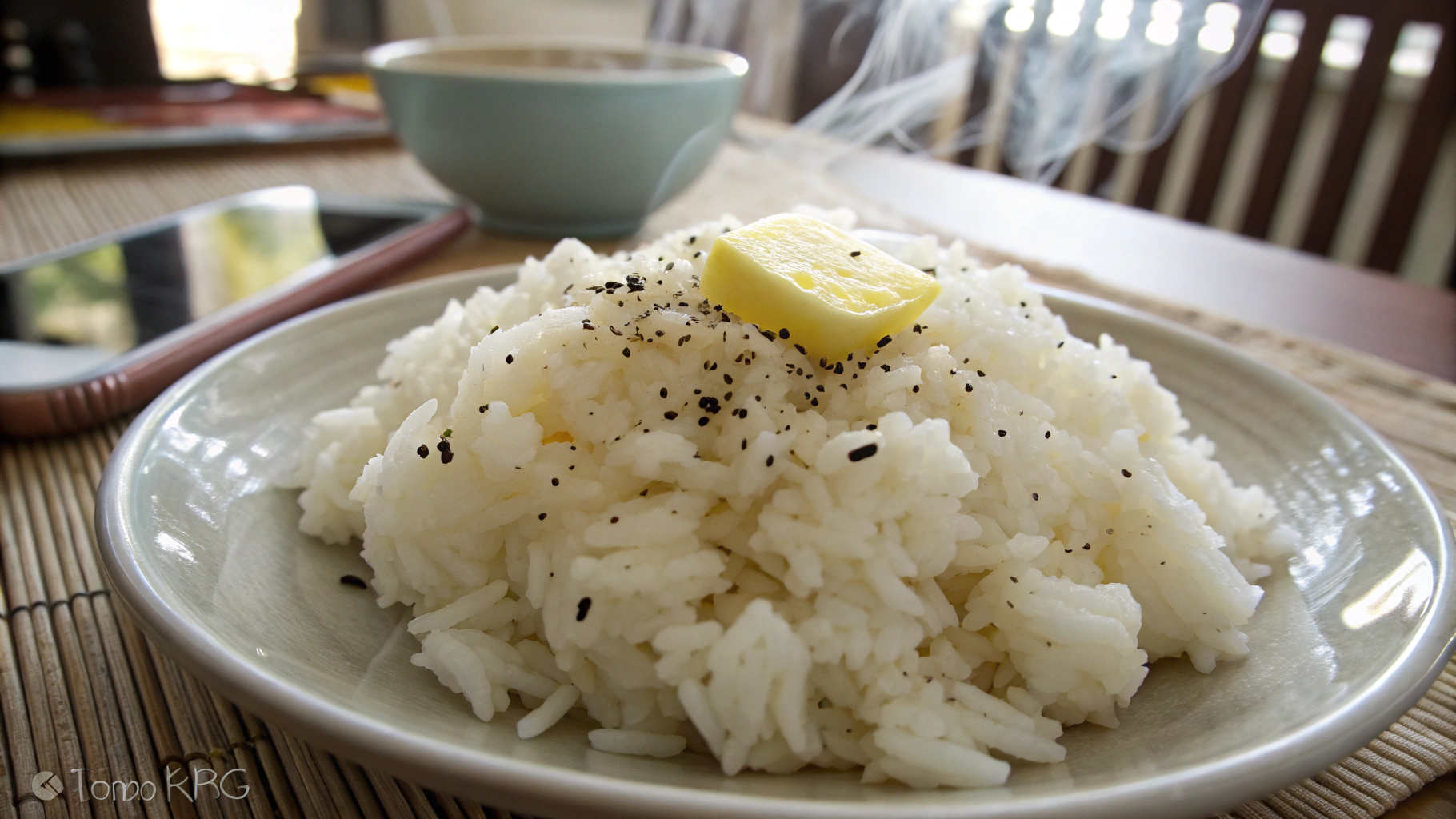Introduction: Does Pepper Taste Good on Rice?
Rice is a staple in many cultures around the world, cherished for its versatility and simplicity. But a common question often arises: Does pepper taste good on rice? Whether you’re preparing a quick meal or elevating your side dish, the right seasoning can make all the difference. In this guide, we’ll explore how pepper can transform rice into a flavorful dish that complements any main course. By following this recipe, you’ll learn how to use pepper in the best possible way to enhance your rice, creating a simple yet delicious meal.
Ingredients for Rice Seasoned with Pepper
To prepare this simple yet flavorful dish, you’ll need a few basic ingredients that you likely already have in your kitchen:
- 1 cup of rice (white or brown)
- 2 cups of water or broth for added flavor
- 1 tablespoon of butter or oil
- 1 teaspoon of black pepper (adjust based on your taste)
- Salt to taste
- Optional: Garlic powder, onion powder, or other herbs
These ingredients are the base, but you can always get creative and add your personal touch. Does pepper taste good on rice? The answer depends largely on the ratio of pepper and the way it’s combined with other seasonings.
Tools Needed for Cooking Pepper on Rice
Before starting the recipe, gather the following tools to ensure smooth preparation:
- Medium-sized pot or saucepan
- Measuring spoons
- Rice cooker (optional)
- Stirring spoon
- Strainer (for rinsing rice, if desired)
With these simple tools, you can effortlessly follow the recipe and get consistent results every time.
Step-by-Step Guide to Making Pepper Rice
This recipe is broken down into clear steps that will help you get the perfect pepper-seasoned rice. Below, we outline the preparation, cooking, and simmering phases.
Preparing the Ingredients for Pepper Rice
Start by rinsing the rice under cold water to remove excess starch. This helps the rice cook more evenly and keeps it fluffy.
- Rinse the rice until the water runs clear.
- Measure the water or broth according to the type of rice you’re using (typically a 1:2 rice-to-water ratio).
- Prepare your seasonings: Measure out your pepper, salt, and any additional spices.
By preparing your ingredients ahead of time, you can ensure the rice cooks evenly and is perfectly seasoned. Now, let’s move on to the cooking process.
Cooking the Rice with Pepper for Flavor
Once the ingredients are prepped, it’s time to cook the rice. Here’s how you can do it:
- In a medium-sized pot, bring the water or broth to a boil.
- Add the butter or oil, then the rinsed rice, and stir it for a few minutes to coat the rice in the fat. This helps to enhance the flavors.
- Add salt to taste, and bring the mixture to a boil again. Once it boils, reduce the heat to low, cover the pot, and let it simmer.
This simple method ensures that the rice cooks properly and absorbs all the flavors. Next, we will focus on the simmering and seasoning process.

Simmering and Adding Pepper to Rice for Flavor
Once the rice is cooking, it’s time to add the pepper and allow the flavors to meld:
- Simmer on low heat: Let the rice cook for about 18–20 minutes, or until all the water is absorbed.
- Add pepper: Once the rice is fully cooked, stir in the freshly ground black pepper. Add more if you prefer a bolder flavor.
- Optional spices: If you wish, sprinkle a little garlic powder, onion powder, or even a dash of paprika to give your rice more depth.
Allow the rice to sit for a few minutes to absorb all the flavors. This is the key to achieving that perfect balance of seasoning.
Discover the secrets behind cornbread variations in our article on Why do people put cornbread in buttermilk? and Is cornbread healthy?. These resources dive deep into the history and health aspects of this beloved dish.
Variations of the Recipe
While the basic recipe is delicious on its own, you can easily customize it to suit your preferences. Here are some variations to try:
- Herbed Pepper Rice: Add a teaspoon of dried herbs, such as thyme or rosemary, to complement the pepper flavor.
- Garlic Pepper Rice: Stir in minced garlic or garlic powder along with the pepper for a richer taste.
- Citrus Zest: Add a dash of lemon or lime zest to the rice to give it a fresh, zesty kick.
- Cheese Pepper Rice: Mix in grated parmesan or cheddar cheese to add creaminess and a savory touch.
These variations help you tailor the dish to your tastes while still keeping it simple.
Common Mistakes and How to Avoid Them
Although the recipe is straightforward, a few common mistakes can affect the outcome. Here’s how to avoid them:
- Overcooking the rice: Be sure to keep the heat low once the water comes to a boil. Overcooking can lead to mushy rice.
- Not rinsing the rice: If you skip this step, the rice may become sticky and clumpy.
- Using too much pepper: Remember that a little pepper goes a long way. Start with a small amount and taste as you go.
- Underseasoning: Make sure to add enough salt along with the pepper to bring out the full flavor.
By avoiding these mistakes, you’ll be able to achieve the perfect pepper-seasoned rice every time.
Explore the best burger options near you with insights from Best hamburgers near you and learn about the best burger company to satisfy your cravings.
Nutritional Benefits
Rice is a great source of energy, and when paired with pepper, it offers several health benefits:
- Rice is a good source of carbohydrates, which provide sustained energy.
- Black pepper is rich in antioxidants and may aid digestion.
- The addition of butter or oil adds healthy fats, which are important for overall health.
This dish can be a balanced meal when paired with vegetables or lean protein, providing essential nutrients and a satisfying taste.
Pairing with Sides and Drinks
Pepper rice is versatile and can be paired with a variety of sides and drinks:
- Sides:
- Grilled vegetables, like zucchini or bell peppers
- Steamed broccoli or green beans
- A fresh salad with lemon vinaigrette
- Drinks:
- Iced tea or sparkling water
- Light white wine or a chilled rosé for a more formal dinner
Pairing rice with the right sides and drinks elevates the overall dining experience and complements the simple, savory flavor of the peppered rice.
Is Black Pepper on Rice Good?
Black pepper is an excellent seasoning for rice, adding a subtle heat and complexity to an otherwise plain dish. The flavor profile of black pepper enhances the natural taste of rice without overwhelming it. It pairs particularly well with white or brown rice, complementing both the grain’s neutral flavor and any additional ingredients. For those who enjoy a bit of spice, adding freshly cracked black pepper to rice can elevate it into a flavorful, satisfying side dish. Moreover, black pepper is known for its health benefits, such as aiding digestion and having antioxidant properties. Therefore, not only does black pepper improve the taste of rice, but it also adds a nutritional boost. When used in moderation, black pepper can be the perfect finishing touch to your rice, making it more interesting without overpowering the dish’s simplicity.
Can You Put Pepper on White Rice?
Yes, you can definitely put pepper on white rice, and it’s a popular choice for many home cooks. White rice has a mild, neutral flavor that acts as a perfect base for a wide variety of seasonings. Pepper, particularly black pepper, is one of the simplest and most effective ways to enhance the flavor of white rice. The slight heat from the pepper adds an interesting contrast to the rice’s softness, making the dish more flavorful and exciting. You can adjust the amount of pepper based on your personal preference, from a light sprinkle to a more generous serving. Additionally, pepper works well with other spices, allowing you to create a customized flavor profile. Whether you’re preparing a quick side dish or serving rice with a main course, pepper on white rice is an easy way to add depth to your meal.
What Spices Go Well with Rice?
Rice is incredibly versatile, and many spices pair wonderfully with it. Commonly, black pepper is a go-to option, adding a mild heat that complements the rice’s neutral flavor. Garlic powder or onion powder can add savory depth, making rice more aromatic and flavorful. Turmeric is another fantastic spice for rice, offering a vibrant color and a subtle earthy taste, commonly used in many Middle Eastern and Indian rice dishes. For those who enjoy a bit of warmth, cumin is an excellent choice, providing a slightly nutty and peppery flavor that enhances rice, especially in Mexican or South Asian recipes. Cinnamon and cloves work well when preparing sweet rice dishes, while bay leaves can infuse the rice with a mild herbal fragrance. Paprika can also add both color and a smoky flavor. These spices give rice incredible variety, making it an adaptable side dish to any meal.
What Tastes Best on Rice?
Rice is an adaptable canvas that pairs well with many toppings and seasonings, depending on your preferences and the dish you’re preparing. Soy sauce is a popular option, especially in Asian-inspired dishes, adding a savory, umami-rich flavor that enhances the rice’s natural taste.
For a fresh twist, lime juice and cilantro offer a refreshing, zesty contrast. Butter or olive oil can also enrich the rice, giving it a smooth texture and depth of flavor. If you’re looking for a bit of heat, chili flakes or hot sauce make great additions.
Cheese, like grated parmesan or cheddar, makes the rice creamy and indulgent—perfect for comfort food. Roasted vegetables or fresh herbs can elevate the dish, introducing a touch of natural sweetness.
Ultimately, what tastes best on rice depends on the flavor profile you’re aiming for, and the options are endless.
Conclusion:
In conclusion, does pepper taste good on rice? Absolutely! This simple recipe proves that with just a few basic ingredients and the right seasoning, rice can be transformed into a flavorful side dish. The versatility of the recipe allows for endless variations, so you can adapt it to suit your tastes. Whether you’re preparing it as a quick weeknight dinner or serving it alongside a more elaborate meal, peppered rice is an easy and satisfying choice. So, go ahead and give this recipe a try—you may find yourself making it a staple in your kitchen.

